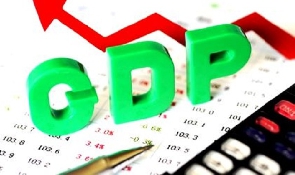The economic downturn in Ghana as a result of the coronavirus disease 2019 (COVID-19) pandemic intensified in April, with declines in output, new orders and purchasing activity much steeper than those recorded in March.
Staffing levels, meanwhile, were scaled back to a similar extent as in the previous month. Falling demand across the private sector had a further deflationary impact, with both input costs and output prices falling sharply again.
The headline seasonally adjusted Ghana PMI® sank to a new record low of 31.7 in April, well below the previous record of 41.4 posted in March. Several of the indices covered by the survey hit new record lows during the month, most notably output and new orders.
The decrease in business activity was severe and largely reflected the COVID-19 pandemic, with a number of respondents indicating that they had closed down during the lockdown.
January 2014. Employment fell substantially for the second month running amid lower workloads and efforts to comply with social distancing rules in the workplace. The rate of job cuts was broadly in line with that seen in March. With output requirements much reduced, firms scaled back their purchasing activity and inventory holdings at unprecedented rates.
Commenting on the latest survey results, Andrew Harker, Economics Director at IHS Markit, said: “If the PMI readings in the March survey were bad, then the April figures are truly terrible and go way beyond anything seen before in more than six years of data collection.
The impacts of COVID-19 and lockdowns to try and prevent its spread were particularly severe on output and new orders, with a number of firms closed completely.
One relative bright-spot was employment where the rate of job cuts was broadly stable as opposed to seeing the sort of strong accelerations witnessed for output and new orders. “With the lockdown now starting to be eased, some firms see this as a chance to start returning to normal. This optimistic view is not shared by all, however, with other companies fearful of how long the effects of the pandemic will last.”
Meanwhile, those companies that did purchase items found that suppliers’ delivery times lengthened considerably. Company shutdowns and travel restrictions as part of the lockdown were reportedly behind delays to deliveries.
Overall input prices continued to fall, down for the second month running in April amid reductions in both purchase prices and staff costs. Purchase costs fell on the back of reduced demand for inputs, with the rate of decline little-changed from that seen in March.
Meanwhile, reduced employment contributed to lower staff costs. Decreases in output prices also continued in April, with lower input costs enabling firms to reduce their selling prices in an effort to secure new business. Although solid, the reduction in output prices was softer than that seen in the previous month.
Business confidence picked up in April, after having slumped in March. Those firms that foresee a rise in output over the coming year generally expect a return to growth following the end of the lockdown. On the other hand, a number of panellists remained concerned that the negative impacts of COVID-19 will be prolonged.
A diffusion index is calculated for each survey variable. The index is the sum of the percentage of ‘higher’ responses and half the percentage of ‘unchanged’ responses. The indices vary between 0 and 100, with a reading above 50 indicating an overall increase compared to the previous month, and below 50 an overall decrease.
The indices are then seasonally adjusted. The headline figure is the Purchasing Managers’ Index™ (PMI). The PMI is a weighted average of the following five indices: New Orders (30%), Output (25%), Employment (20%), Suppliers’ Delivery Times (15%) and Stocks of Purchases (10%).
For the PMI calculation the Suppliers’ Delivery Times Index is inverted so that it moves in a comparable direction to the other indices. Underlying survey data are not revised after publication, but seasonal adjustment factors may be revised from time to time as appropriate which will affect the seasonally adjusted data series.
Business News of Thursday, 7 May 2020
Source: thebftonline.com













